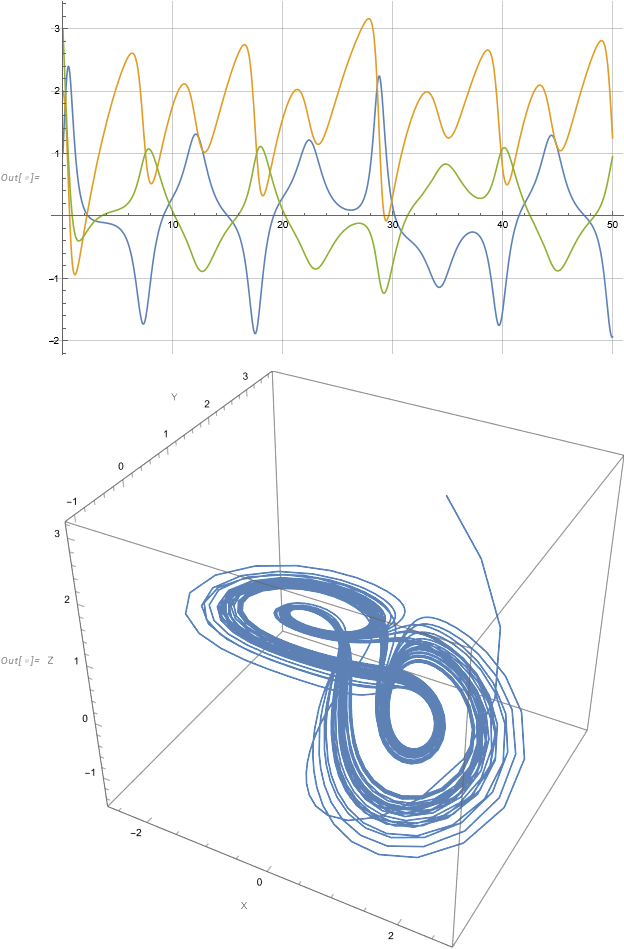Athanasios,
you did not say so, but I am assuming that you want the above system of DGL get solved:
\[Alpha] = 0.9;
\[Beta] = 0.2;
\[Gamma] = 1.2;
eqs = {x'[t] == z[t] + (y[t] - \[Alpha])*x[t],
y'[t] == 1 - \[Beta]*y[t] - x[t]^2,
z'[t] == -x[t] - \[Gamma]*z[t]};
{fx, fy, fz} = NDSolveValue[{eqs, x[0] == 1, y[0] == 2, z[0] == 3}, {x, y, z}, {t, 0, 500}];
Plot[{fx[t], fy[t], fz[t]}, {t, 0, 50}, ImageSize -> Large, GridLines -> Automatic]
ParametricPlot3D[{fx[t], fy[t], fz[t]}, {t, 0, 500}, ImageSize -> Large, AxesLabel -> {"X", "Y", "Z"}]

I did not know that Euler was dealing with interest rates, etc., but interesting though!
Does that help? Regards -- Henrik